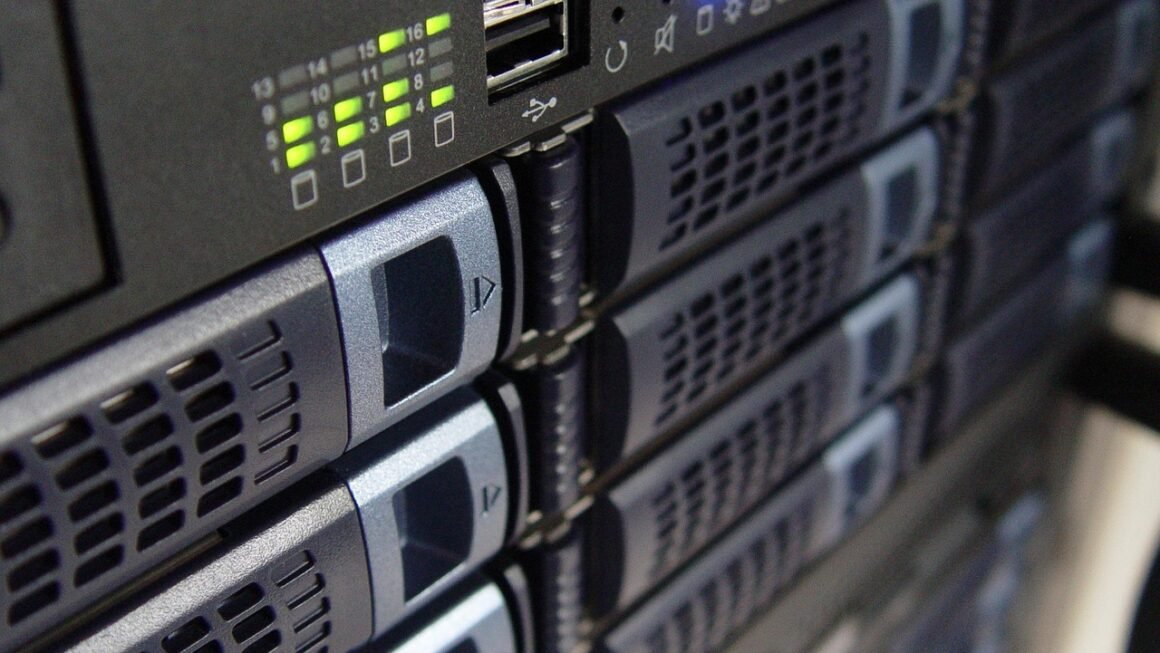Virtual reality (VR) has moved from the realm of science fiction to a tangible technology transforming industries from gaming and entertainment to healthcare and education. It offers immersive experiences that blur the line between the physical and digital worlds, allowing users to interact with simulated environments in a way that was previously unimaginable. This blog post delves into the world of virtual reality, exploring its capabilities, applications, and future potential.
What is Virtual Reality?
Defining Virtual Reality
Virtual Reality (VR) is a computer-generated simulation of a three-dimensional environment that can be interacted with in a seemingly real or physical way by a person using special electronic equipment, such as a helmet with a screen inside or gloves fitted with sensors. It creates an immersive experience by stimulating the senses – sight, sound, and sometimes even touch – making the user feel present in that virtual environment. Unlike augmented reality (AR), which overlays digital information onto the real world, VR completely replaces the user’s view with a simulated world.
Types of VR Systems
VR systems can be broadly categorized into three types based on the level of immersion and hardware requirements:
- Non-Immersive VR: These systems utilize standard monitors or screens to display the virtual environment. Users interact with the environment using standard input devices like keyboards, mice, or gamepads. This is the least immersive type of VR, often used for training simulations or simple games. A driving simulator using multiple monitors is a good example.
- Semi-Immersive VR: Semi-immersive systems provide a more engaging experience by utilizing large screens or projectors combined with more advanced input devices like steering wheels, joysticks, or motion sensors. These systems offer a wider field of view and more intuitive interaction. Flight simulators used for pilot training fall into this category.
- Fully Immersive VR: Fully immersive VR systems utilize headsets (HMDs) to completely block out the real world and display a stereoscopic 3D virtual environment. Hand tracking, motion capture, and haptic feedback devices further enhance the sense of presence and interaction. Popular examples include the Oculus Quest, HTC Vive, and Valve Index.
The Technology Behind Virtual Reality
Hardware Components
Several key hardware components work together to create a VR experience:
- Head-Mounted Displays (HMDs): The HMD is the most recognizable piece of VR hardware. It features:
Displays for each eye to create a stereoscopic 3D image.
Lenses to focus the image.
Head tracking sensors (accelerometers, gyroscopes, and magnetometers) to track head movements.
Connectivity (wired or wireless) to a computer or processing unit.
Integrated headphones or audio output.
- Tracking Systems: These systems monitor the user’s movements in the physical space and translate them into the virtual environment. Common types include:
Inside-out tracking: Sensors on the headset track the surrounding environment, eliminating the need for external sensors. (e.g., Oculus Quest)
Outside-in tracking: External sensors track the headset and controllers based on infrared light or other technologies. (e.g., Valve Index with base stations)
- Controllers: Controllers allow users to interact with objects and navigate within the virtual environment. They typically feature buttons, joysticks, and touchpads. Many controllers also include haptic feedback to simulate the sensation of touch.
- Processing Unit: A powerful computer or dedicated processor is required to render the virtual environment and handle tracking and input data. The requirements vary depending on the complexity of the VR application.
Software and Development
VR software development involves creating the virtual environment, implementing interactions, and optimizing performance for a seamless user experience. Popular development platforms include:
- Unity: A cross-platform game engine widely used for VR development due to its versatility, ease of use, and extensive asset store.
- Unreal Engine: Another powerful game engine known for its high-fidelity graphics and advanced features, often used for creating visually stunning VR experiences.
- VR SDKs (Software Development Kits): Provided by VR hardware manufacturers (e.g., Oculus SDK, SteamVR SDK), these kits offer APIs and tools for developers to access hardware features and optimize performance.
Applications of Virtual Reality
Gaming and Entertainment
VR gaming offers unparalleled immersion, allowing players to step inside the game world and interact with it in a natural and intuitive way. From action-packed shooters to puzzle-solving adventures, VR games are revolutionizing the entertainment industry.
- Examples: Beat Saber, Half-Life: Alyx, Resident Evil 4 VR*
VR is also being used to create immersive entertainment experiences beyond gaming, such as:
- Virtual Concerts: Attending live concerts from the comfort of your home with a 360-degree view of the stage.
- Interactive Storytelling: Experiencing narratives in a more engaging and personal way, influencing the plot through your choices.
- Virtual Tourism: Exploring historical sites, museums, and exotic locations without leaving your home.
Healthcare
VR is transforming healthcare by providing innovative solutions for training, therapy, and rehabilitation.
- Surgical Training: Medical students and surgeons can practice complex procedures in a safe and realistic virtual environment, improving their skills and reducing errors in real-world operations.
- Pain Management: VR can distract patients from pain during medical procedures or chronic pain management by immersing them in calming or engaging virtual environments. Studies have shown a reduction in pain perception in VR users.
- Rehabilitation: VR can be used to help patients recover from stroke, traumatic brain injury, or other conditions by providing engaging and motivating exercises that improve motor skills and cognitive function.
- Mental Health Therapy: VR is being used to treat phobias, anxiety disorders, and PTSD by exposing patients to virtual simulations of their fears in a controlled and safe environment.
Education and Training
VR provides immersive and interactive learning experiences that can enhance student engagement and improve knowledge retention.
- Virtual Field Trips: Students can explore historical sites, museums, and natural environments without the constraints of travel or budget.
- Interactive Simulations: VR can simulate complex scientific processes, engineering designs, and other real-world scenarios, allowing students to learn by doing.
- Vocational Training: VR can provide realistic training simulations for various professions, such as welding, carpentry, and automotive repair, allowing students to develop practical skills in a safe and controlled environment.
Engineering and Design
VR is revolutionizing engineering and design by allowing engineers and designers to visualize and interact with 3D models in a realistic virtual environment.
- Product Design: Designers can create and evaluate product prototypes in VR, identifying design flaws and making improvements before physical prototypes are built.
- Architectural Visualization: Architects can create immersive virtual tours of buildings and spaces, allowing clients to experience the design and provide feedback before construction begins.
- Manufacturing and Assembly: VR can be used to train workers on complex manufacturing and assembly processes, reducing errors and improving efficiency.
The Future of Virtual Reality
Technological Advancements
The future of VR is bright, with ongoing advancements in hardware and software driving innovation and expanding its potential.
- Improved HMDs: Higher resolution displays, wider fields of view, and lighter, more comfortable designs will enhance immersion and reduce motion sickness.
- Advanced Tracking: More accurate and reliable tracking systems will enable more natural and intuitive interactions in VR. Eye tracking and facial expression tracking will further enhance the sense of presence and realism.
- Haptic Feedback: More sophisticated haptic devices will simulate a wider range of tactile sensations, allowing users to feel the texture, weight, and temperature of virtual objects.
- Wireless VR: Wireless VR headsets will eliminate the need for cables, providing greater freedom of movement and a more immersive experience.
Market Growth and Adoption
The VR market is expected to continue to grow rapidly in the coming years, driven by increasing adoption across various industries. According to Statista, the global VR market is projected to reach $55.45 billion by 2028.
Ethical Considerations
As VR technology becomes more advanced and widespread, it is important to consider the ethical implications.
- Privacy: Collecting and storing user data from VR interactions raises privacy concerns.
- Addiction: The immersive nature of VR can be addictive, leading to potential health and social problems.
- Social Isolation: Spending too much time in virtual environments can lead to social isolation and a disconnect from the real world.
- Misinformation: VR can be used to create realistic but false simulations, spreading misinformation and propaganda.
Conclusion
Virtual Reality has emerged as a transformative technology with the potential to revolutionize numerous industries. From gaming and entertainment to healthcare and education, VR offers immersive and interactive experiences that can enhance learning, improve training, and provide new forms of entertainment. As technology continues to advance and the market grows, VR is poised to become an integral part of our lives. Understanding its capabilities, applications, and ethical considerations is crucial to harnessing its potential and shaping a future where VR benefits society as a whole. As you explore the world of VR, consider the possibilities it unlocks and its impact on your own field of interest.



